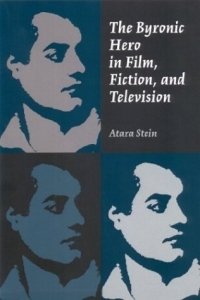Tracing the influence of Lord Byron’s Manfred as outcast hero on a pantheon of his contemporary progenies—including characters from Pale Rider, Unforgiven, The Terminator, Aliens, The Crow, Sandman, Star Trek: The Next Generation, and Angel—Atara Stein tempers her academic acumen with the insights of a devoted aficionado in this first comprehensive study of the Romantic hero type and his modern kindred.
The Byronic Hero in Film, Fiction, and Television bridges nineteenth- and twentieth-century studies in pursuit of an ambitious, antisocial, arrogant, and aggressively individualistic mode of hero from his inception in Byron’s Manfred, Childe Harold, and Cain, through his incarnations as the protagonists of Westerns,action flicks, space odysseys, vampire novels, neo-Gothic comics, and sci-fi television. Such a hero exhibits supernatural abilities, adherence to a personal moral code, ineptitude at human interaction (muddled even further by self-absorbed egotism), andan ingrained defiance of oppressive authority. He is typically an outlaw, most certainly an outcast or outsider, and more often than not, he is a he. Given his superhuman status, this hero offers no potential for sympathetic identification from his audience. At best, he provides an outlet for vicarious expressions of power and independence. While audiences may not seek to emulate the Byronic hero, Stein notes that he desires to emulate them; recent texts plot to "rehumanize" the hero or voice through himapprobation and admiration of ordinary human values and experiences.
Providing thoughtful analyses of her examples, Stein places her Byronic heroes into two camps: the leader-hero who pursues justice outside the law through explosive violence, illustrated in a trio of Clint Eastwood Westerns, the Crow films, and the Terminator films; and the angst-ridden loner hero who views his power as a burden and pines for human existence, represented in Anne Rice’s vampire novels and Neil Gaiman’s Sandman graphic novels. She also provides a detailed examination of one manifestation of the Byronic hero who embodies traits of both leader-hero and gloomy egotist: Q, the omnipotent alien from Star Trek: The Next Generation.
The Byronic heroine is notwholly absent from our culture, as Stein proves by her inclusion of Terminator’s Sarah Connor and Alien’s Ellen Ripley. Both assume Byronic traits as they war against oppressive institutional authority while also actively seeking liberation from socially imposed constraints of gender. Stein concludes her innovative study with an engaging discussion of pop culture’s most current and complete version of the Byronic hero: the brooding vampiric champion of Angel.
Typified by a fiery autonomy, empowered inhumanity, and flamboyant self-realization, the Byronic hero with his many sullen faces has asserted his popular appeal with audiences for over two centuries. Complemented by nine illustrations, Stein’s perceptive reading of his nature and nuances demonstrates that his immortality will not soon wane. Это и многое другое вы найдете в книге The Byronic Hero In Film, Fiction, And Television
